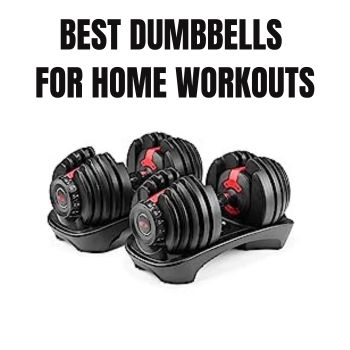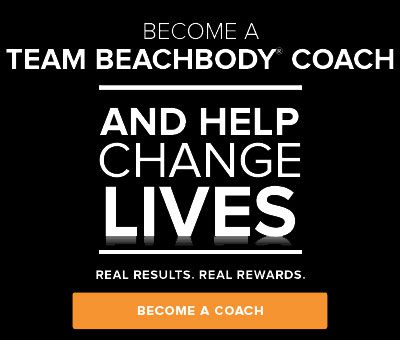The 5 Best and Worst Alcoholic Drinks
Let’s face it, even the most hardcore fitness enthusiasts have to go out a let loose from time to time. I’ve done a lot of “googling” on this topic in the past with mixed results. As usual, one of my mentors, Beachbody’s own Steve Edwards made the picture much more clear. Below he covers some cocktails you can enjoy without sabotaging your efforts with your fitness program. He also tells what drinks to stay far away from. I have to admit I was guilty of indulging on one of the “forbidden five” quite regularly. I hope you find this article and useful as I did.
By Steve Edwards
If you want a drink, you want a drink, and all the bad press you read isn’t likely to quench your thirst. So the nutrition 911 on alcohol will be to skip the boring science and discuss what to do when you’re going to drink. Besides, studies keep telling us that a bit of alcohol in your diet enhances your health and lengthens your life span. All you may know now is that the last time you hit the bar, you woke up feeling like someone was using a Rototiller® on your brain, leaving you to wonder, “How can this have been good for me?”
The truth? It isn’t. A hangover means you’ve done damage that needs to be reversed. Unfortunately, one common remedy is a greasy meal, which further damages your system and hinders your weight loss plans. But all cocktails are not created equal. Just like making smart choices with the foods you eat, imbibing with a plan can be the difference between extending your life and maintaining your P90X®, INSANITY®, or TurboFire® results and getting to know your Domino’s delivery guy on a first-name basis. Let’s get started, class, with this week’s nutrition 911: the Best and Worst Cocktails.
The Best:
- Red wine. Much has been written about its high antioxidant content, the chemical resveratrol, and how wine drinkers are the healthiest sect of those who imbibe regularly. A handful of large-scale, long-term studies on wine have shown that those who drink heavily outlive teetotalers, and those who drink in moderation outlive everyone. This has led to a huge increase in wine production in the U.S.Keep in mind that while you hear a lot about the difference between red and white wines, in virtually every study, both have been shown to improve health. Red wine and its high antioxidant content gain most of the attention, but two recent studies gave white wine a higher rating for both free radical reduction and cardiovascular health. It seems you can’t go wrong either way.Downside . . . The sulfates in red wine negatively affect many people, often leading to an inability to sleep. And if you can’t sleep, you’re offsetting all the positive effects. Consider checking the alcohol content listed on the bottle—the recent trend has been toward high-alcohol-content wines. By drinking high-alcohol wines, it might seem like you’re getting more bang for the buck. While that may be true, do you really want the bang, or just a nice accoutrement to dinner?
- Microbrews. In recent years, on a percentage basis only microbrewed beer production has increased more than wine production in the U.S. The reason for this trend is generally credited to mass-produced American beer, which beer snobs think tastes worse than stagnant water. But another reason is that microbrewed beer is healthier—much healthier, in fact. Most mass-produced beers in the U.S. are cheaply made, relying on ingredients like corn, rice, additives, colorings, and flavorings (oddly enough, the same things that make up most of the junk you can buy at 7-Eleven®). Microbrews adhere to the European codes for beer production, which dictate that it’s made from barley, hops, wheat, and water. A good microbrew contains protein (more than double, in fact), more electrolytes (quadruple), and many times more vitamins and assorted phytonutrients (like flavonoids) than cheap beer. In fact, microbrewed beer is better for you than most sports drinks, sometimes even for sports.Downside . . . It can be part of the recovery process, but don’t try making it do all the work. Beer still contains alcohol, and if you down beer as if it were Gatorade®, you’ll wind up with a hangover that’ll impede your sports performance.
- Guinness stout. In Ireland, the saying goes that Guinness is food. And sure enough, it tastes like it. Thick, rich, and syrupy, one Guinness can feel as satisfying as a case of Bud Light®. It’s also low in calories and high in iron, making it one of the best choices if you’re going for a mass-produced beer.Downside . . . It can be addicting. When one doesn’t do the trick anymore, you can quickly pile on calories. And remember that most calories in beer come from alcohol.
- Top-shelf alcohol of any kind. Straight, on the rocks, or with water. The means of producing hard alcohol ensure that you’re getting what you pay for. Cheap stuff isn’t made with a high-quality distillation process, which leaves it with all sorts of impurities and a taste that virtually guarantees it’ll wind up being mixed with nonalcoholic and usually highly caloric mixers. Top-shelf stuff, whether it’s bourbon, vodka, or even rum, is made to be consumed alone, or with water. Slowly savoring your drink is a great way to make sure that you don’t overdo it. Cost is another. It’s much better to slowly relish a single glass of Blanton’s than to power down a fifth of Old Grand-Dad® and Coke®.Downside . . . The cost of providing for your top-shelf-only habit could lead to enough extra stress down at the office to offset the stress-relief you’re achieving with your drink.
- Vodka and soda. Vodka is the purest of the hard alcohols, and soda is mainly water. Add a couple of limes and you’ve got a clean, refreshing cocktail with very few calories.Downside . . . It’s so clean and refreshing, it’s hard to be restrained. If you have four of these, you might as well have just had that strawberry margarita you wanted in the first place.
The Worst:
- Scorpion. Or just about anything you’ll find at the Kon Tiki, Trader Vic’s®, or anyplace where a drink is referred to as “grog.” If there’s anything worse than mixing a lot of sugar-based alcohols together, it’s mixing them with a bunch of sugary juices in a bowl that’s big enough for six. Drink one of these and be prepared to skip the entire drunken process and head straight to the hangover.
- Long Island Iced Tea. Forget the word “tea.” There are no antioxidants to be found in this concoction of five different alcohols, sweet and sour mix, and Coke. A few of these and you might as well put in a wake-up call with Domino’s.
- Red Bull and vodka. If you want to be a supercharged drunk, here ya go. One of the main offenders of the hangover is your inability to sleep well after a night on the town. Nothing enhances the chance of seeing dawn’s early light like a couple of these. The only positive is that maybe you’ll dance all night and work off the calories. Hopefully you won’t have to work the next day.
- Jack and Coke. You might as well just mainline your whiskey. Nothing’s better than Coke at creating a sugar rush. Adding alcohol to this mix creates the perfect atmosphere for a bar fight. The only saving grace is that being drunk impairs your reflexes. Losing a couple of late-night melees could lead to some restraint.
- Piña colada. The only thing more densely caloric than alcohol is fat, and this baby combines the two, along with all the sugar you need to guarantee a hangover. The result is a virtually nutrition-free milkshake that contains half of your daily caloric requirement. The only possible bright side is that the only place you’re likely to feel comfortable drinking one of these is on an island where you have ample opportunity to shed the pounds you gained the night before.







